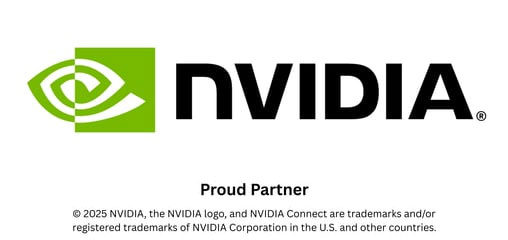Across European boardrooms, one risk looms large – vendor lock‑in. We’ve moved from worrying about cloud dependence to grappling with how AI ties us even tighter to the very titans we once hoped to transcend.
My own leadership journey feels relevant here: We’re building AI platforms knowing full well that a mere technical prowess doesn’t guarantee sovereignty or ROI. This isn’t about being anti-US or anti-scale. It’s about control, agility and resilience.
Let’s unpack why 2025 is pivotal, what tools matter and how to act on terms that matter to the board.
Why Vendor Lock‑In Now Defines Both Risk and Strategy
1. A European sovereignty wake‑up call
A TechRadarPro analysis found 84 % of UK IT leaders are concerned about geopolitical AI/data dependencies and emphasises investment in EU-based LLMs and sovereign cloud platforms, like Open Euro LLM and EuroStack, to reduce reliance on US providers. techradar
2. Kubernetes-era lessons reborn
We thought containers broke the lock‑in chains, yet cloud providers still make it technically and fiscally punitive to leave. Cast AI explains how proprietary formats, egress fees and custom APIs trap workloads and raise migration costs dramatically. cast
3. AI’s next frontier of dependency
Deloitte highlights that generative AI compounds vendor lock‑in – not just infrastructure, but models and data access layers deloitte. The glue between your prompts, training data and inference endpoints is cementing your tech fate.

Local and Open‑Source LLMs: A Strategic Escape Route
1. Ollama and local LLM frameworks
Ollama’s v0.9 now supports streaming and introspection (“thinking mode”), and hosts models like DeepSeek-R1 locally, preserving GDPR compliance and keeping private data in-house cohorte. For board-level assurance, data never leaves your boundary.
2. Open‑source LLMs gaining traction
A LinkedIn summary notes open‑source LLMs (LLaMA, Falcon, BLOOM, Mistral) are increasingly preferred – cheaper, flexible and allowing full data control linkedin. Europe’s own OpenEuroLLM initiative underlines that sovereignty is not theoretical – it’s being built in 24 EU languages. techcrunch
3. Protocols to neutralise lock‑in
New standards like Anthropic’s open-source Model Context Protocol (MCP) and LangChain’s Agent Protocol promise interoperability between LLM vendors vktr. The result? If an API changes, you don’t need a complete rewrite, just a new connector.
A European Executive Playbook
Appraise your current risk
Start with a jurisdictional audit. Gcore data shows 80 % of EU firms are already assessing legal risk connected to non-EU cloud providers gcore. If you’re relying on US hyperscalers, track where data lives, who can access it under foreign law and the scale of egress penalties.
Test an exit route – pilot local LLMs
Deploy a POC with local models via Ollama or similar. Assess operational fit, costs vs cloud APIs, MLOps readiness and data security benefits. Be candid: You’re testing feasibility, not rushing to abandon giants overnight.
Adopt open protocols early
If your stack relies on cloud AI APIs, integrate MCP or Agent Protocol logic now. These tools may still be maturing, but adding them early reduces rework versus a late-stage bolt-on.
Design sovereign architectures
Hybrid-first, not hybrid-after. Whether you use EU cloud providers like Gcore or sovereign PaaS (e.g. Convox), the architecture must embed portability and data control from day one, rather than bolt-ons or manual migrations.
Engage C-suite on control imperatives
This isn’t just an IT decision. Highlight sovereignty, risk and budget exposures alongside AI opportunity. Articulate lock‑in as a strategic constraint on future M&A flexibility, geographies or regulation. Be willing and ready to lead the initiative, without C-level buy-in and a champion, most pilots fail miserably.
Where This Fits in Europe’s Digital Strategy

The European cloud market was already €80.8 bn in 2024, with a predicted 17 % annual growth, yet sovereignty, sustainability and AI innovation remain key pillars techradar medium medium. National security, compliance and industrial policy increasingly drive investment, not only cost. It’s a moment where strategy and infrastructure must align.
Big Tech keeps offering incentives, pricing tweaks and even EU data localisation options, but make no mistake, these are tools to hold your strategic choices hostage. Europe’s own path is to balance that scale with local trust and autonomy. That duality becomes a competitive advantage, not an either/or dilemma.
Final Take: Control as Strategy
Big clouds and LLMs bring scale, but left unchecked, they also bring dependency. For European leaders, it’s no longer just about cost or speed: it’s about sovereignty, futureproofing and strategic oversight.
Technical nuance matters, but business leaders prefer a clear line: “Will this shift preserve choice, compliance and value?” If pilots lean toward in-house models, open standards and multi-cloud gateways, the answer is “yes.”
In 2025, escape looks like orchestration: If you opt in to use the giants, do it on your terms. The lock‑in mirage? That’s fading. Control, modularity and sovereignty? That’s where value truly scales.
Victor A. Lausas
Chief Executive Officer
Subscribe to North Atlantic’s email newsletter and get your free copy of my eBook,
Artificial Intelligence Made Unlocked. 👉 https://www.northatlantic.fi/contact/
Discover Europe’s best free AI education platform, NORAI Connect, start learning AI or level up your skills with free AI courses and future-proof your AI knowledge. 👉 https://www.norai.fi/






